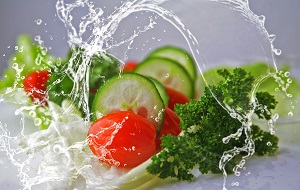![]() Lack of Local Food Systems is a news and information topic monitored and covered by: Prepper Watch – Food Concerns
Lack of Local Food Systems is a news and information topic monitored and covered by: Prepper Watch – Food Concerns
Introduction
In the face of growing global instability, environmental shifts, and economic disruptions, a resilient food system has become more critical than ever. As a prepper, ensuring a sustainable food supply is paramount. Weak local food systems that depend on global supply chains leave communities vulnerable to disruptions.
Whether due to natural disasters, economic collapse, or geopolitical conflicts, a failure in local food production and distribution can lead to severe shortages, price hikes, and food insecurity. This blog will explore how preppers can address the issue of weak local food networks and provide strategies to strengthen personal food resilience.
Understanding the Problem: The Fragility of Local Food Systems
Local food systems are deeply interconnected with the broader global supply chains. When these networks are strong, they provide communities with fresh produce, grains, meats, and dairy. However, they are heavily dependent on transportation, energy, and labor that are vulnerable to disruption. Many local food systems rely on imports, which exposes them to global supply chain issues such as shipping delays, fuel shortages, and market instability.
Global supply chains are designed for efficiency, but not necessarily for resilience. A disruption at any point in the chain can cause a ripple effect that affects food availability. Preppers recognize this weakness and understand that self-sufficiency is essential in an unpredictable world. When local food systems fail, it is critical to be prepared with alternatives that do not rely on fragile global supply networks.
The Importance of Food Security in Prepping
Food security refers to having access to enough nutritious food to maintain health and well-being. For preppers, food security is a top priority, and it goes beyond just stockpiling food. It involves creating a food system that is self-sustaining, independent of external systems, and capable of weathering disruptions. There are several facets of food security that preppers focus on:
- Accessibility: Ensuring that food is readily available, even in times of crisis.
- Adequacy: Maintaining enough food to meet dietary needs over extended periods.
- Stability: Protecting the food supply from price volatility and shortages.
- Sustainability: Ensuring that food production can continue indefinitely, even under difficult circumstances.
A prepper’s ultimate goal is to build resilience through self-reliance, which reduces dependence on fragile local and global food networks.
Stockpiling Food: The Prepper’s First Line of Defense
Stockpiling is the most immediate and fundamental strategy for preparing for food system disruptions. Preppers begin by storing non-perishable items that have a long shelf life and can be used in an emergency. The key to successful stockpiling is to focus on the following:
- Nutritional Value: Stock a variety of food to ensure a balanced diet. This includes proteins (canned meats, dried beans), carbohydrates (rice, pasta, oatmeal), fats (cooking oils, peanut butter), and vitamins and minerals (canned fruits, dried vegetables).
- Shelf Life: Select foods with a long shelf life. Items such as freeze-dried meals, canned goods, and dried grains can last for years. It’s essential to rotate stock regularly, consuming older items first and replacing them with fresh stock.
- Water Storage: Clean drinking water is as critical as food. Preppers should store enough water for drinking, cooking, and sanitation. A common guideline is one gallon per person per day, with additional water stored for long-term needs.
In addition to food, preppers should invest in food preservation methods such as canning, dehydrating, and fermenting to extend the shelf life of home-grown or bulk-purchased food.
Growing Your Own Food: The Foundation of Food Independence
One of the most effective ways to prepare for disruptions in the local food system is by cultivating your own food. Growing your own fruits, vegetables, and herbs allows you to rely less on the global food supply chain. Preppers focus on several methods to maximize food production and security:
- Home Gardening: Even a small garden can provide a significant amount of food. Preppers should focus on growing hardy, high-yield plants like potatoes, beans, squash, and root vegetables, which can thrive in various climates.
- Greenhouses and High Tunnels: These structures extend the growing season, allowing preppers to produce food year-round, even in colder climates. They also provide protection against pests and harsh weather conditions.
- Vertical Gardening: If space is limited, vertical gardening (using trellises or stacked containers) can be an effective method for growing more food in a smaller area.
- Seed Saving and Preservation: To ensure that food production remains sustainable, preppers save seeds from year to year. This creates a renewable source of food that doesn’t rely on external suppliers. Heirloom varieties are particularly valuable as they are less likely to be genetically modified.
Preppers also focus on growing food that can be stored for long periods, such as root vegetables, squash, and grains like wheat and corn.
Livestock and Animal Husbandry: A Source of Protein and Fertilizer
In addition to growing crops, preppers also consider raising livestock for both food and other essential resources. Livestock can provide a renewable source of protein, such as eggs, milk, and meat, as well as fertilizer for gardens. Common animals that preppers raise include:
- Chickens: These are relatively easy to care for and can provide eggs, meat, and manure. Chickens are also excellent at foraging, helping to reduce feed costs.
- Goats: Goats provide milk, meat, and manure. They are hardy animals that can thrive on a variety of forage and are relatively low-maintenance.
- Rabbits: Rabbits reproduce quickly and can be raised in small spaces. They provide meat and fertilizer and are an excellent option for those with limited land.
- Bees: Beekeeping is a valuable skill for preppers. Bees provide honey, wax, and pollination for gardens. Honey is also an excellent food source due to its long shelf life.
By diversifying the types of animals raised, preppers can ensure a stable supply of meat, dairy, and other animal products.
Preserving Food for Long-Term Storage
Food preservation is a critical skill for preppers who are looking to secure a long-term food supply. Canning, freezing, and dehydrating are all valuable methods for preserving food. Each method has its pros and cons, and preppers often use a combination of techniques to ensure food remains viable over extended periods.
- Canning: Canning allows preppers to store meats, vegetables, fruits, and even soups. Pressure canning is necessary for low-acid foods like meats and vegetables, while water bath canning is suitable for high-acid foods like tomatoes and fruit preserves.
- Dehydrating: Dehydration removes moisture from foods, preventing bacterial growth and spoilage. Preppers use dehydrators or solar drying techniques to preserve fruits, vegetables, and even meat.
- Freezing: While not as long-term as canning or dehydrating, freezing is an excellent way to preserve large quantities of food. For long-term power outages, however, preppers should have alternative refrigeration methods, such as a solar-powered freezer.
Preserving food allows preppers to store surplus crops from the growing season, reducing reliance on external food systems.
Building Local Networks for Food Security
While prepping involves preparing for self-sufficiency, it is also essential to build local networks of like-minded individuals. During times of crisis, communities that are able to share resources and support one another will be better equipped to survive. Preppers can form:
- Community Gardens: Establishing or participating in a local community garden can help ensure that food is grown collectively, benefiting all participants. Community gardens also provide valuable opportunities for learning and collaboration.
- Food Co-ops: Preppers can join or establish food cooperatives, which are community-driven organizations that collectively purchase food in bulk at reduced prices. Co-ops can also be used for growing and preserving food together.
- Bartering Systems: Preppers often establish bartering systems with neighbors, trading surplus food, seeds, livestock, and other goods. Bartering can be a valuable alternative to cash-based transactions when currency systems collapse.
By building strong local networks, preppers increase the resilience of their communities, ensuring that food systems remain functional even when global supply chains break down.
Investing in Alternative Energy for Food Production
Alternative energy sources are critical for preppers who want to maintain food production during power outages or disruptions. Solar power, wind energy, and biogas systems can provide electricity to power lights, water pumps, refrigerators, and even small-scale farm equipment.
- Solar Panels: Solar panels can power a variety of equipment, including greenhouses, pumps, and refrigeration units. They are an essential part of off-grid living and can provide sustainable energy year-round.
- Wind Power: For areas with consistent winds, small wind turbines can provide power for lighting and small electrical systems.
- Biogas: A biogas digester can convert animal manure or organic waste into methane gas, which can be used for cooking or heating.
Alternative energy ensures that food production remains viable even in the absence of a stable local grid.
Preparing for Economic Disruptions
Weak local food systems are often exacerbated by economic instability, which can lead to rising food prices, job losses, and scarcity. Preppers should focus on economic preparedness by:
- Diversifying Income Streams: Having multiple income streams can help preppers stay afloat during economic downturns. This can include side businesses, investments in precious metals, or barter systems.
- Debt Reduction: Reducing debt increases financial flexibility and allows preppers to allocate more resources to food storage and self-sufficiency.
- Investing in Hard Assets: Preppers often invest in physical assets such as gold, silver, or real estate, which can hold their value during economic crises.
Financial resilience complements food security, ensuring that preppers are able to afford the resources they need when local food systems are in turmoil.
Conclusion: Building a Self-Sufficient Future
The lack of resilient local food systems poses a significant threat to global food security. Preppers, however, are not reliant on these fragile systems. Through strategic planning, self-sufficiency, and community-building, preppers can ensure that they are prepared for disruptions in local food networks.
By growing their own food, raising livestock, stockpiling supplies, and investing in alternative energy sources, preppers can create sustainable food systems that are not dependent on external factors. As the world becomes increasingly uncertain, preppers who prioritize food security will be best equipped to thrive, no matter what challenges arise.

